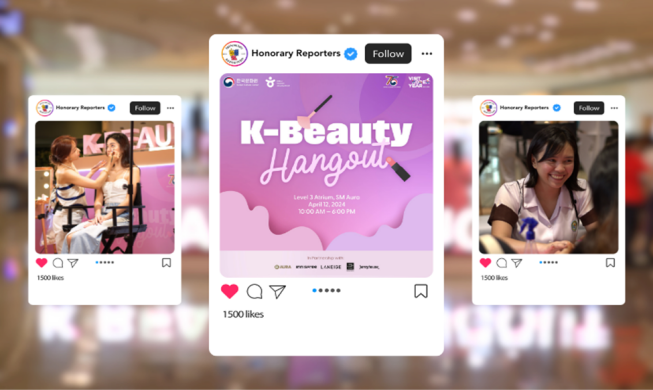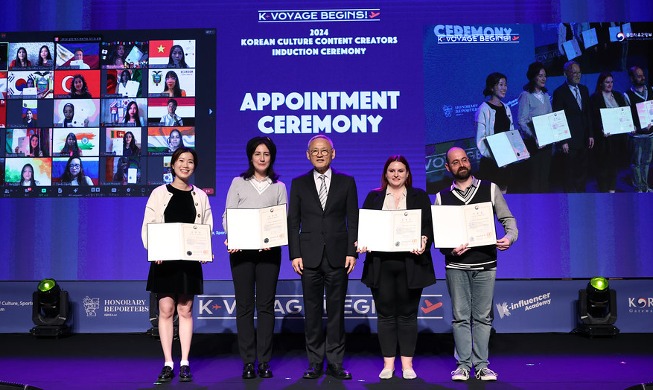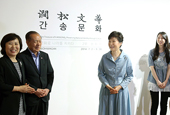-
 Korea.net's 24-hour YouTube channel
Korea.net's 24-hour YouTube channel- NEWS FOCUS
- ABOUT KOREA
- EVENTS
- RESOURCES
- GOVERNMENT
- ABOUT US
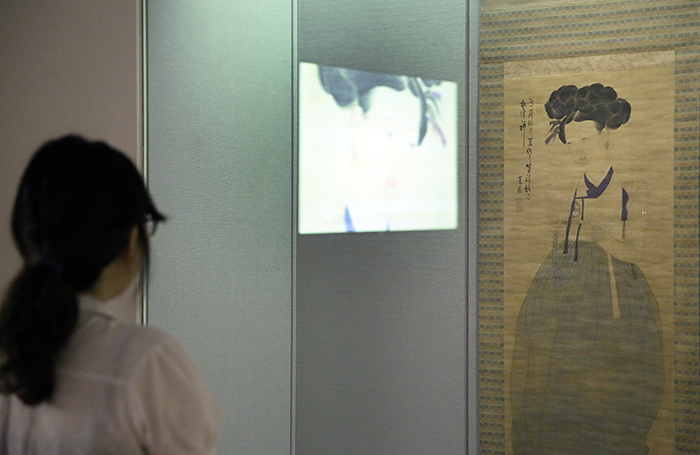
A visitor appreciates the painting of ‘A Beauty’ by Shin Yun-bok. (photo: Jeon Han)
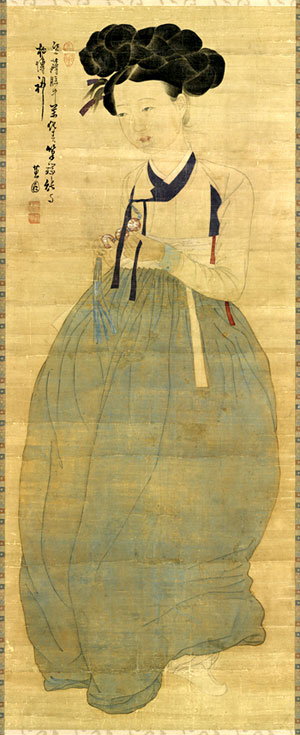
‘A Beauty’ by Shin Yun-bok, 114x 45.5㎝ (courtesy of Kansong Art and Culture Foundation)
Bohwagak is the previous name of Kansong Art Museum, the first private museum in Korea built in 1938 by Chun Hyung-pil (1906-1962). It was named by Chun’s master Oh Se-chang (1864-1953). It was later renamed Kangsong Museum in 1966.
In the past, Kansong Art Museum held exhibitions only twice a year – in spring and autumn. During the exhibition, the neighborhood was often surrounded by long queues of people who had gathered from everywhere to see it. In the case of "A Beauty" by Shin Yun-bok (1758-unknown), one of the most famous painters of the Joseon Dynasty (1392-1910), the museum has opened the painting to the public only twice thus far, in 2008 and 2011. That means the painting has gone on an outing only once in the 76 years since the museum began.
The first part of the exhibition opened in March this year. During that first event of 77 days, about 120,000 people visited the exhibition. The first part of the exhibition focused more on the life of the museum founder Chun Hyung-pil and stories behind his collection of cultural relics. The second part included a selected collection of the most well-known, iconic artworks that characterize the history of Korean art from as early as the Three Kingdom’s Period (57 B.C.-AD 935) to the 19th century.
A total of 114 works of art are on display in this exhibition. Some of the must-see pieces include paintings such as "A Beauty" and "Album of Genre Paintings" by Shin Yun-bok, "Yellow Cat Romps with Butterfly" by Kim Hong-do (1745-1806), "Three Men Questioning Age" by Jang Seung-eop (1843-1897) and "Panoramic View of Inner Pungak" by Jeong Seon (1667-1759). Apart from paintings, the exhibition also houses important Buddhist sculptures such as "Gilt-bronze Standing Buddha Triad Inscribed with Gyemi Year" and works of calligraphy, including "Drinking Tea to Reach Zen" by Kim Jeong-hui (1786-1856). The exhibition also includes some displays such as "The Proper Sounds for the Instruction of the People" and "Celadon Prunus Vase with Inlaid Cloud and Crane Design," which were introduced in the previous exhibition.
Among all of these, the most famous piece is "A Beauty." The painter drew a lady considered in the traditional sense to be regarded as a beautiful woman. She has a small oval facial shape with thin lean eyebrows and deep, charming eyes. Her lips are about to speak a word with a shy smile. All of the facial expressions in the drawing add to the mystic charm of the woman.
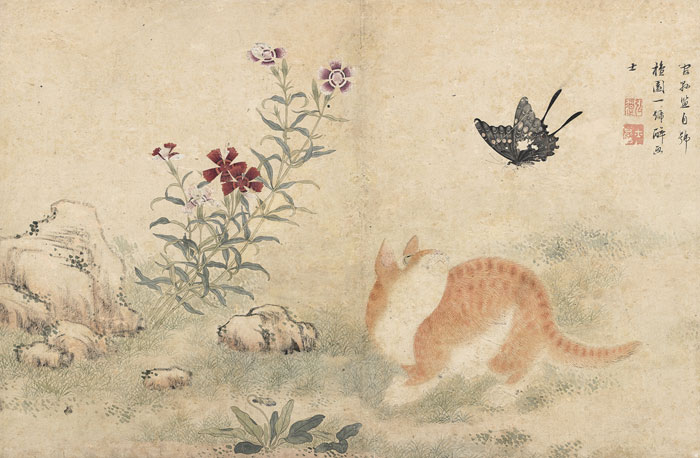
‘Yellow Cat Romps with Butterfly’ by Kim Hong-do (courtesy of Kansong Art and Culture Foundation)
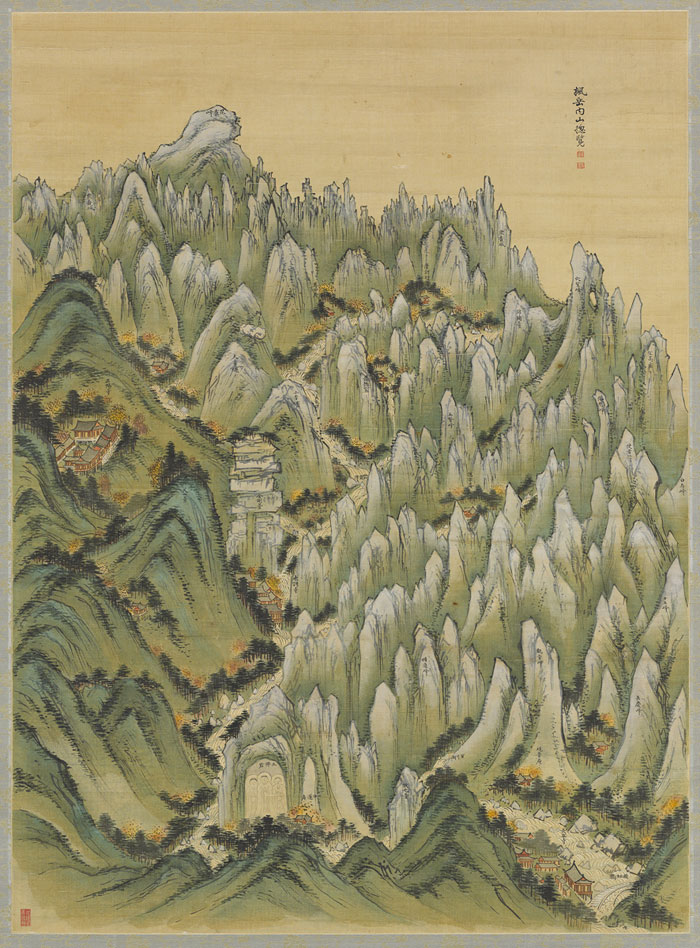
‘Panoramic View of Inner Pungak’ by Jeong Seon. This painting draws a scenic view of Geumgansan Mountain. (courtesy of Kansong Art and Culture Foundation)
The exhibition will be held until September 28 at the Design Museum of DDP. Admission is KRW 8,000 for adults and KRW 4,000 for students.
More information about the exhibition is available on its homepage.
http://kansong.org/exhibit/exhibit_ing.asp
More information about DDP is available on its homepage.
http://www.ddp.or.kr/MA010001/getInitPage.do
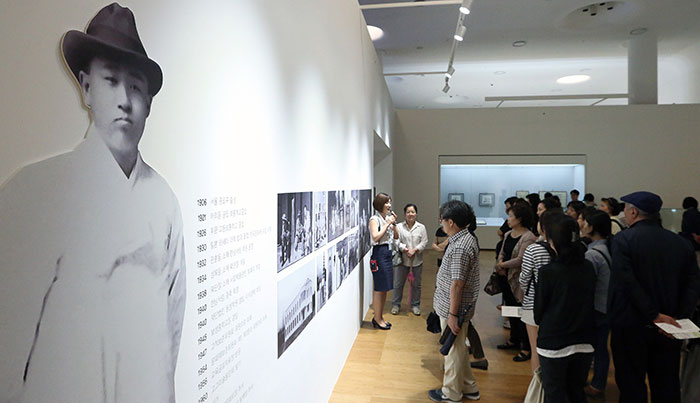
Chun Hyung-pil (1906-1962) believed that cultural heritage represents the identity and mental values of its country. In that faith, he protected Korea’s cultural heritage from being stolen by Japan during the colonial period. The above photo shows a group of people listening to an explanation of Chun from a curator at the second part of 'The Treasures of Kansong.' (photo: Jeon Han)
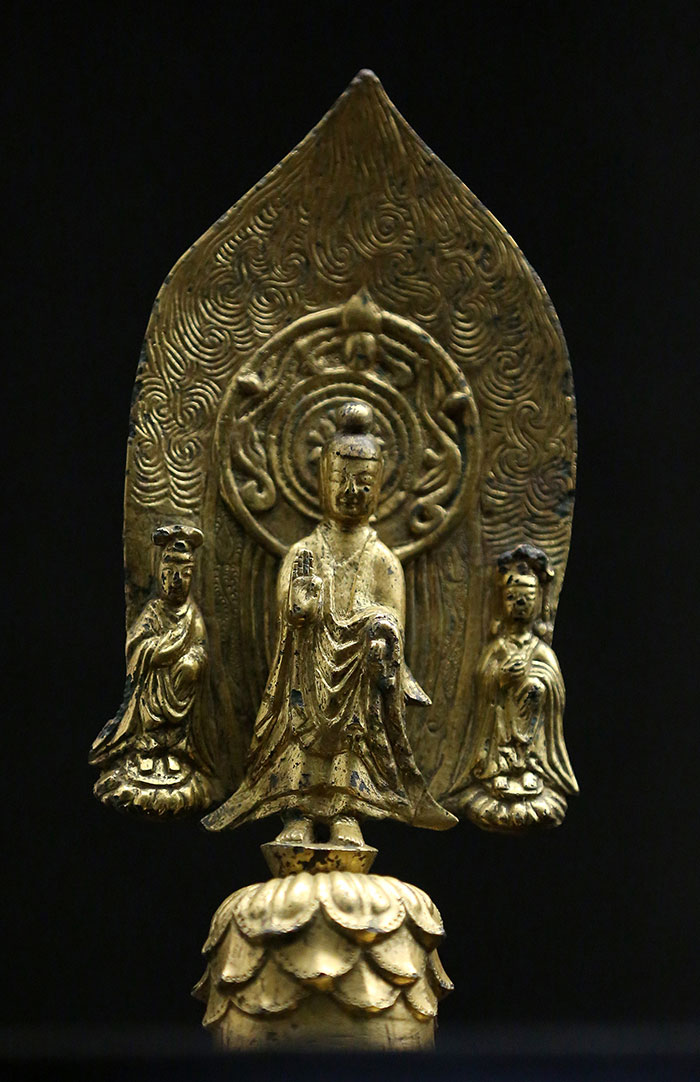
'Gilt-bronze Standing Buddha Triad Inscribed with Gyemi Year.' This sculpture is considered to hold significance for showing the trends and characteristics of the Buddhist sculpture art in the mid-6th century in Korea during the Three Kingdoms’ Period. (photo: Jeon Han)
By Yoon Sojung
Korea.net Staff Writer
arete@korea.kr
Related Contents
Most popular
- Event 'K-Beauty Hang Out' draws hundreds in Philippines
- Ceremony in Seoul inducts 2,641 content creators of Korean culture
- Cultural spring festival Seoul Festa to start on May 1
- 'Mad Max' director impressed by 'cinema-literate' Korean viewers
- President, Romania pledge better defense, nuclear power ties



